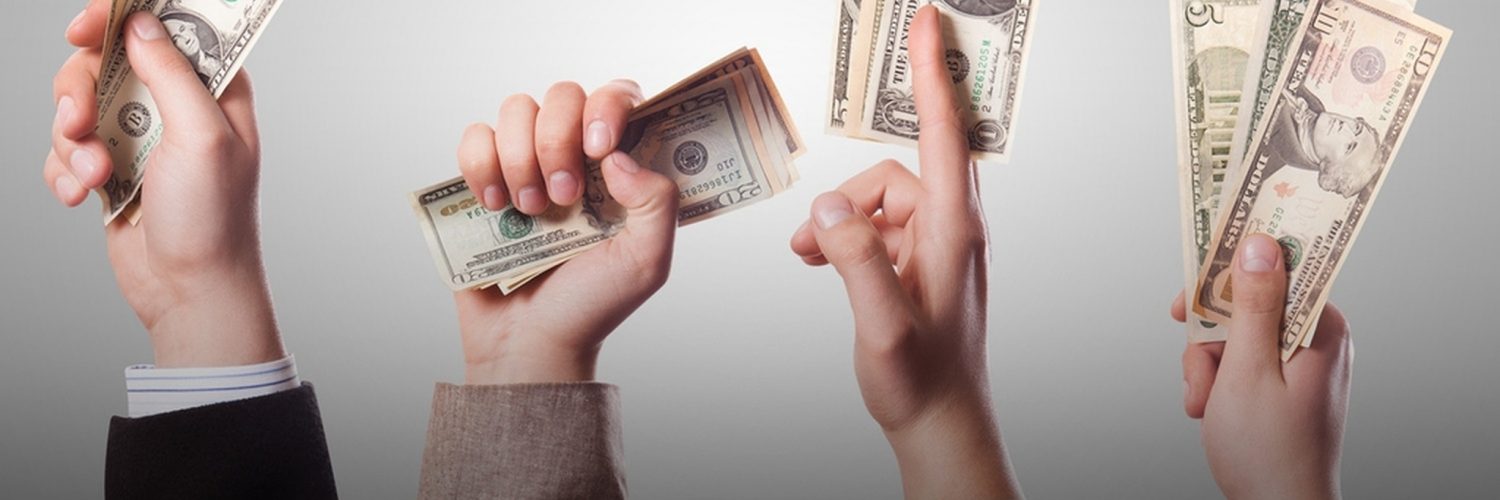Public opinion surveys have found wide support among Americans for raising the federal minimum wage to $15 an hour. A proposal from national Democrats would gradually raise the minimum wage from $7.25 to $15 by 2025, with roughly a $1.50 increase every year.
A report from the nonpartisan Congressional Budget Office argues that increasing the minimum wage to $15 would reduce poverty and benefit millions of low wage workers. However, it also illustrates that it could add to the federal deficit and would result in the cutting of overall employment.
Supporters
Supporters of the minimum wage increase continue to highlight the Congressional Budget Office’s findings about poverty reduction. The CBO estimates that an increase in the federal minimum wage would lift 900,000 people out of poverty, as well as increase incomes for 17 million Americans.
The left-leaning Economic Policy Institute estimated 32 million people would benefit from the proposed minimum wage increase. The majority of those affected would be substitute teachers, nursing assistants, food preparation workers, and grocery store employees. With the new minimum wage in place, the average worker affected by the increase would be earning an additional $3,000 a year.
Supporters of this increase maintain that this is beneficial for the economy as these low wage workers will spend this increase in wages on local business and services. According to Ben Zipperer, an economist and author at EPI, “This injection of wages will help stimulate the economy and spur greater business activity and job growth.”
Opposition
The opposition to increasing the federal minimum wage argues that such a policy would increase unemployment and damage the economy.
While the CBO says increasing the minimum wage would lift 900,000 out of poverty, total employment would fall by 1.4 million according to the same CBO report. The report also notes that by 2025 half of the 1.4 million jobs lost would have dropped out of the labor force entirely. Additionally, a study done by the National Bureau of Economic Research found that higher minimum wages tend to disproportionately benefit skilled or more experienced workers.
The CBO report also highlights that, taking into account the complete range of revenue and spending effects, the minimum wage increase would also increase federal deficits to $54 million over the course of 10 years. This runs contrary to arguments that a higher minimum wage would actually save the government money, as this increase in wages would reduce the demand for other government support programs.
Overall, the CBO’s analysis showed that a $15 minimum wage would “reduce the nation’s output slightly through the reduction in employment and a corresponding decline in the nation’s stock of capital.”
Larry Kudlow, former director of the National Economic Council in the Trump administration, said, “My view is a federal minimum wage is a terrible idea. Idaho is different than New York. Alabama is different than Nebraska. That is why the federal minimum wage doesn’t work for me.”
Small business
Raising the minimum wage brings about a vast amount of concerns for small businesses.
In a city such as Seattle, evidence shows that the increase does not always bring about its intended outcomes.
When that city moved to a $15 an hour minimum wage in 2014, it resulted in workers being given fewer work hours and a $125-a-month pay decrease because of the hours lost. Additionally, it resulted in a 9% reduction in the amount of low-wage jobs available to workers.
The CBO report states that, “A higher minimum wage reduces the family income of business owners to the extent that firms’ profits are reduced. Those losses in business income are biggest in the first years after a higher minimum wage is introduced. Real income is also reduced for nearly all people because increases in the prices of goods and services weaken families’ purchasing power.”
The CBO study also says that the reduction in business income would result in higher prices as higher labor costs were absorbed by business owners and passed on to the consumers.
Unemployment concerns
Increasing the minimum wage will likely result in increased unemployment for low skilled workers.
According to the Bureau of Labor Statistics, half of the working population in 20 states earned less than $18 per hour in 2019. Additionally, in 35 states the median hourly wage was less than $20. In 47 states, 25% of all workers earned less than $15 an hour. Setting a minimum wage so close to the median wage would effectively price many workers out of the labor market, according to Michael Strain, Director of Economic Policy Studies at the American Enterprise Institute.
Inflation
Increasing the minimum wage could fuel an increase in prices on consumer goods, thus fueling inflation. Increased prices typically correspond to an increase in the cost of living, which can and will negatively impact workers.
When raising minimum wage, there are often two schools of thought when it comes to whether and how to index the hourly wage: index the wage to price inflation to guarantee that minimum wage will always have the same amount of purchasing power, or index to the increase in the median wage.
The Raise the Wage Act, the 2021 Democratic proposal initiated in the House, calls for the latter in an attempt to further distribute any wealth generated by the economy. However, by the time the nation would reach the $15 minimum wage in 2025, inflation would likely have knocked the actual purchasing power of that money down to $11.93. This would mean that the minimum wage would have to be set at $18.87 to reflect the original request for $15 an hour, if it were to be the same value as $15 today.
The Romney-Cotton proposal, rolled out by Republicans Sen. Mitt Romney and Sen. Tom Cotton, provides an alternate approach to raising the federal minimum wage. Their bill would increase the minimum wage to $10 an hour over four years and tighten enforcement on hiring undocumented workers. This plan would also delay increasing the minimum wage until after the pandemic is over.
While the stimulus package no longer includes the $15 minimum wage provision, the controversy is far from over. There are other means by which supporters are currently trying to achieve an increase in the mandated hourly wage. The Protecting the Rights to Organize Act has provisions in it that would raise the minimum wage to $15 as well as other aspects being championed as workers’ rights provisions.
















Add comment